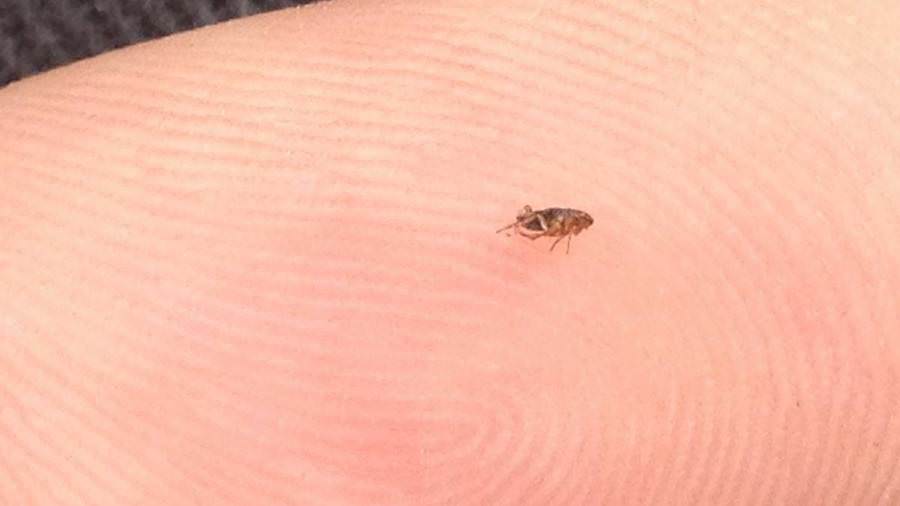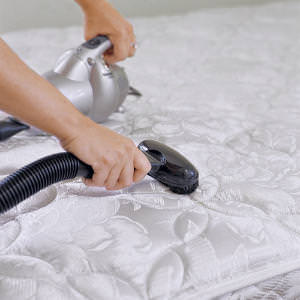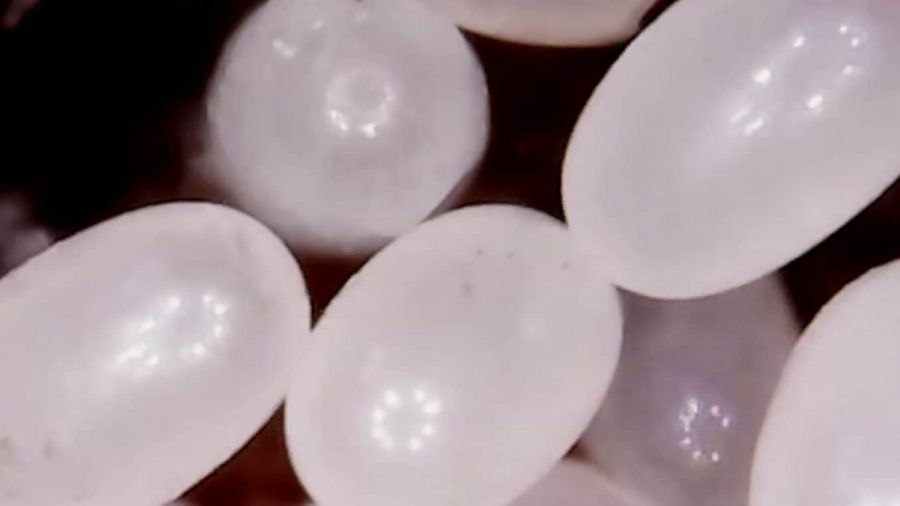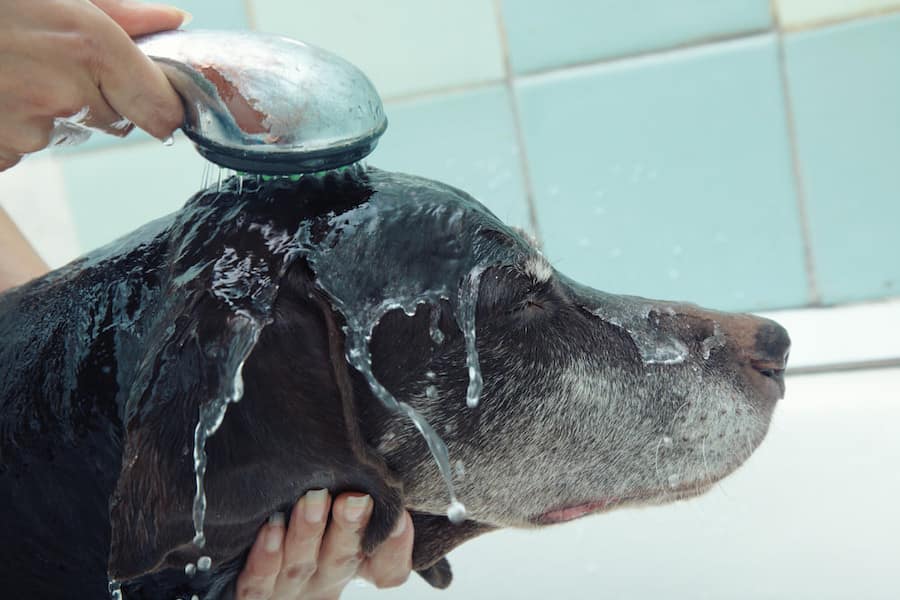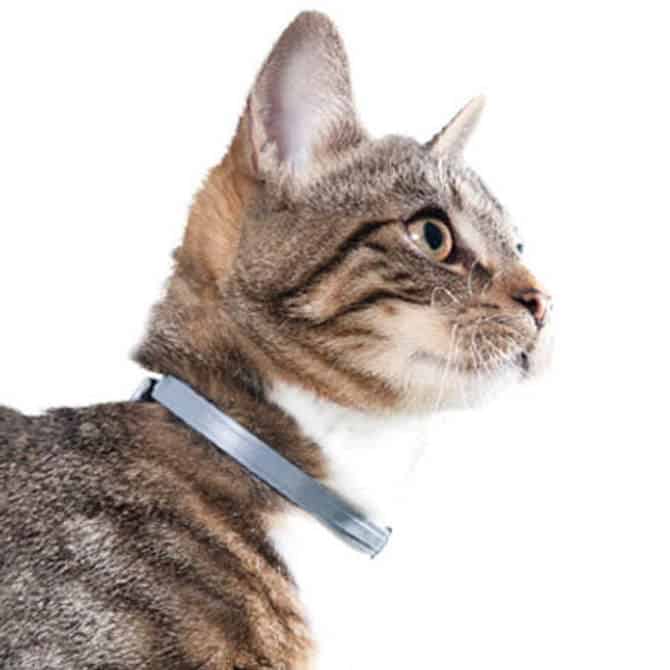Flea Bites On Children
Fleas are tiny parasites that are usually associated with the family dog or cat. But once fleas have made their way into your home, there is a high chance that they will start to feed upon the human residents too.
If your children are getting bitten by fleas in the home, this is very unsavory and uncomfortable for both you and your child. Fortunately, it is very unlikely that flea bites will transfer any disease, but that isn’t very reassuring when your child is crying and scratching at flea bites on their skin.
In this article, we take a look at how to recognize flea bites on kids, how to treat them and how best to prevent children from being bitten by fleas in the first instance.
What Do Flea Bites Look Like?
Flea bites cause little, round, red bumps upon the skin. These very often have a reddish, pink halo around them. If the bite is pressed, the skin around it will turn white. The degree of irritation which occurs depends heavily upon the individual who has been bitten. Some people may experience very little itchiness, while others can experience extreme itching and swelling. In some cases, allergic reactions can occur – although these can take as long as 24 hours to appear.
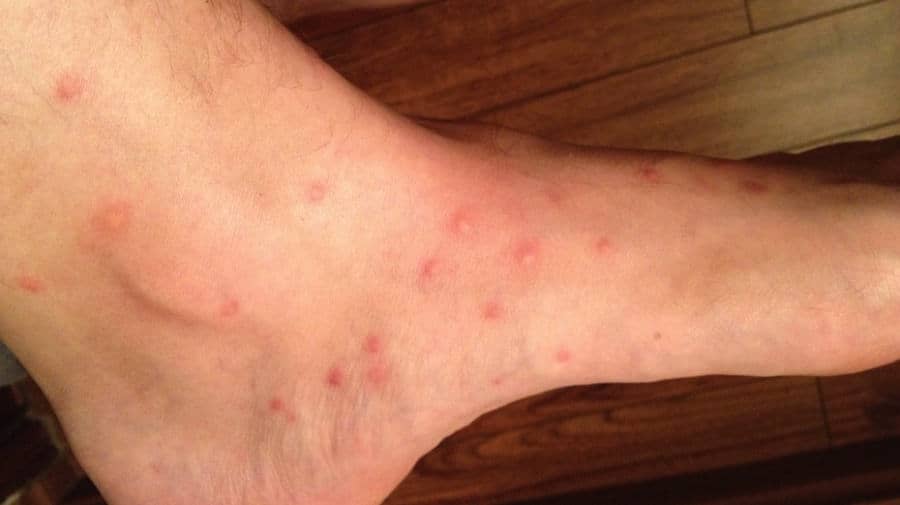
It can be rather difficult to distinguish between a flea bite and the bite from a mosquito. The bites from both insects result in itchy red lumps. The best way to determine whether the bites are caused by fleas is to take note of the time of day the bites occur. If you get a flurry of bites around dusk in various areas of the body, this is more likely to be mosquito bites (or even bed bugs if later in the night).
Fleas will bite at any time of day or night and are most often found on the feet, ankles and lower legs. Of course, if you have physically seen fleas in your home, this will clearly answer the question of who is responsible!
When fleas feed, they secrete saliva containing a special chemical which transfers into the victim’s skin and blood. This chemical act as an anticoagulant and also pre-digests the skin to make it easier to puncture through. It is this chemical which is the cause of the irritation and itchiness suffered after a flea bite.
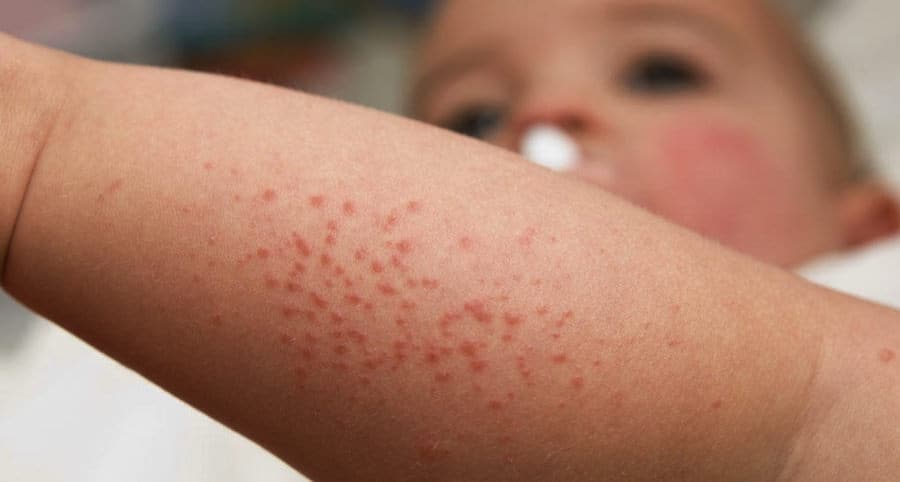
The body reacts to the remaining saliva as a foreign substance and therefore notifies the immune system to deal with the invader. This results in the production of histamine, leading to swelling, redness and itchiness. If an individual is bitten regularly over a period of time, this immune response will lessen and the reaction to new bites will become less noticeable.
If a child is bitten by fleas, they almost always occur around the ankles and feet. However, if the child is crawling, they may be bitten anywhere on the body as they are closer to the ground.
Why Are Fleas Biting My Kids?
Fleas are nasty bloodsuckers which will bite any warm-blooded creature given the opportunity. They must have a blood meal regularly throughout the day to stay healthy, so will happily bite your child if they have the chance.
That said, fleas do tend to prefer to feed on their favorite animal host if they can. In fact, cats fleas will become less fertile if they are feeding exclusively on human blood, so they actively seek out the animal hosts first. If their preferred meal isn’t available, they will quickly decide to feed upon your child in its absence.
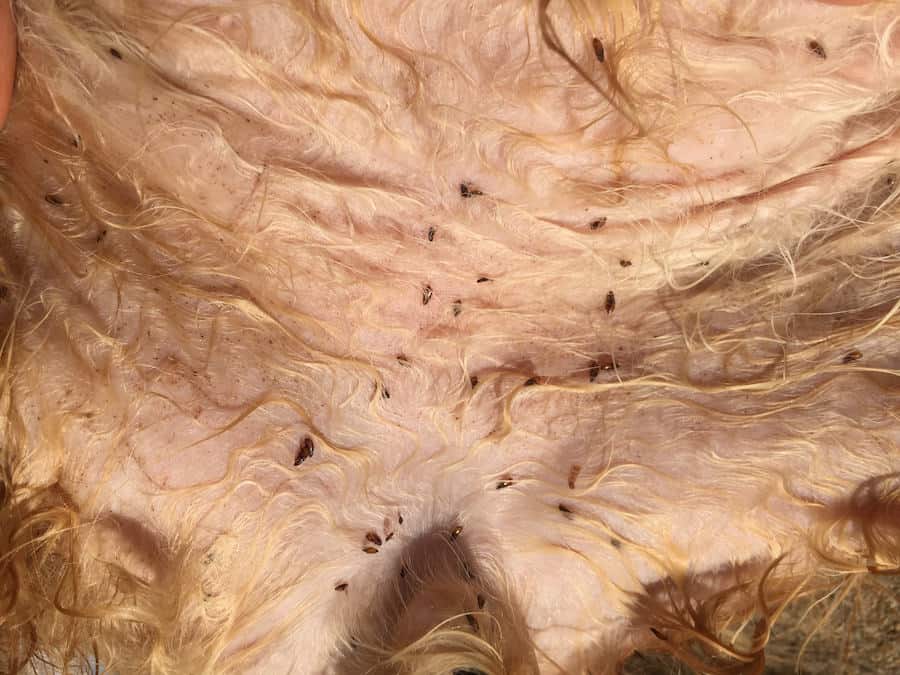
Children can be an easy target for fleas. They very often will be crawling or playing on the floor, which is where fleas tend to hang out, especially if the floor is carpeted. Young children also have soft skin which is easier to bite through. Fleas cannot fly, but they are known for being able to leap huge distances in relation to their size. Kids playing on the floor are therefore an irresistible choice for a quick meal.
Make sure to learn what a flea looks like in order to remain vigilant.
How to Treat Flea Bites on Kids?
If your child is the victim of a flea bite, or three; the first step is to get the area cleaned as soon as you can. You can easily do this with a warm soapy water mixture. Once the area is clean, you should apply an ice cube to take down and calm any swelling which may have occurred. This should also help to minimize pain caused by the inflammatory reaction.
It is best to wrap the ice in some tissue to prevent ice burns upon the skin. If you do not have ice, anything cold will produce the same effect. Apply the cold treatment for about 10 minutes then allow the skin to have a break. If it is still swollen and sore, reapply for a further 10 minutes.
Once you have finished the cold treatment, apply some antiseptic to prevent any infection. If your child is complaining about the itching and scratching at the skin, you can find child-friendly treatments at the drugstore which can help ease the itching. These range from topical creams and lotions, to antihistamines which tackle any allergic reaction that may have occurred.
Although it may be difficult, try to ensure your child does not scratch at the bites. This can easily cause an infection, which will lead to more pain and potential scarring. While flea bites don’t usually last too long, they can linger for greater amounts of time if they become infected.
If you are unable to make it to the drug store, there are some common household groceries which can help to soothe flea bites. Aloe vera gel is a good choice to calm swelling, redness, and itching. Also, green tea can have a similar effect. Brew the tea and allow to cool before applying to the skin. You can also use the tea bag as a compress over the bite.
How to Prevent Fleas from Biting Children?
In the vast majority of case, fleas bite children because they have been brought into the house with the family pet. Pets can pick up fleas from being outside, feral or wild animals, other people’s pets or by being at an infested animal care facility.

In some cases, homes which do not have pets can acquire fleas from wild animals near the home which deposit fleas in the yard. These fleas can hitch a ride on your clothing into the house, or simply leap their way in through an open window or door.
Once they are inside the home, fleas are capable of multiplying incredibly fast. It does not take much time at all for fleas to reproduce to a level which can reach thousands of individuals. Unfortunately, very often a flea problem is not recognized until it is too late. Fleas are so tiny that the first few uninvited visitors are highly unlikely to be spotted.
Of course, the best way to prevent fleas from biting children is to eliminate the fleas. However, this process can take some time due to the resilience of fleas and the distribution of their eggs throughout the home. A good short-term alternative is to use a child-friendly insect repellent in the meantime, to prevent further bites while you tackle the flea infestation at its core.
There are many natural products available which are gentle and effective repellents for young children. They generally use a combination of citronella and other essential oils to deter fleas from jumping onto the skin. It is not recommended to use undiluted essential oils on the skin, so do not be tempted to make your own repellent without speaking to a doctor first.
If you have pets, the most important first step is to ensure your pet is protected from fleas. As previously mentioned, there is a number of potential risk factors which must be avoided or attended to, to prevent fleas on your pet.
A good place to start is in the yard. Fleas like to hide in damp, cool places which are shaded from the sun. The best way to deter them from setting up home in your yard is by keeping the lawn and all shrubbery well-trimmed. This diminishes the places which fleas can hide while waiting to hitch a ride indoors on your pet.
If your pet already has fleas, there is a wide variety of treatments which you can use to remove or deter them from remaining upon your pet. Flea drops or flea tablets from your vet are a good choice to kill fleas which are living on your pet. Alternatively, you can use special flea shampoos and a fine-tooth flea comb to remove fleas and eggs from the coat.
Once any pets have been treated, you will need to work on eliminating fleas from the home. This process is not easy and will likely take multiple treatments to completely eradicate them. Start by washing all cushion covers, pet toys, blankets, and bedding on a very hot wash to kill any fleas or eggs which are hiding there. For the areas in which you cannot hot wash, an effective method is to use diatomaceous earth.
This product kills fleas and their eggs by eroding their bodies and blocking their breathing passages. It is very easy to use, but it is important you choose the right type of diatomaceous earth for your home. The safe form is food grade diatomaceous earth, not the form which is designed to clean home pools. The latter is chemically treated and is not safe for use indoors. You can find food grade diatomaceous earth in health food stores.
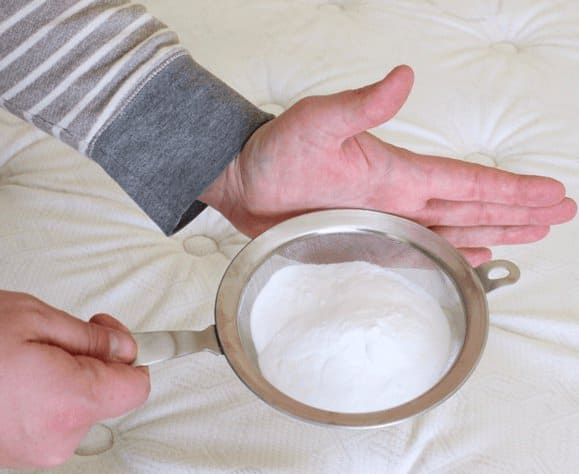
You can use diatomaceous earth to kill fleas by shaking it all over your carpets, mattresses, sofas, and flooring, and using a stiff brush to work it into the fibers and cracks where fleas could be hiding out. Leave the earth in situ for a couple of days and then vacuum thoroughly. This will kill most of the fleas in the home, but it is good practice to repeat again every week for a few weeks to ensure all the eggs and larvae have been destroyed. Specialized flea powders are also available for infested carpets.
Make sure to empty your vacuum outdoors to prevent any living fleas leaping back into your home.
If this doesn’t work, your infestation is likely to be very serious. If you are struggling with fleas after a few weeks of treatment, it is probably best to call for professional help to rid your home of fleas for good.
Summary
Finding flea bites on your kids is distressing and unpleasant. Luckily, it is very rare for flea bites to cause any long-term problems or transfer diseases to people, but that doesn’t take away from the yuck factor of flea bites.
Fleas are naturally very resilient pests, but as we have seen, once you know how to tackle them, it is possible to eradicate them from your home and thus stop children getting bitten by fleas for good.

